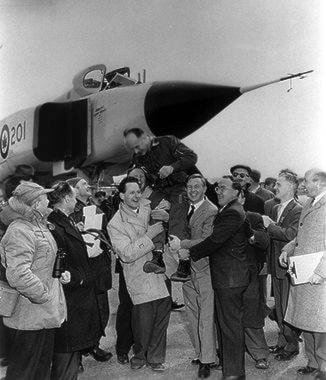Congratulations to the Norwegians for rescuing the Maud which, like the St. Roch, has earned her nation’s highest honours.
Without wishing to make light of a tragedy, the recent discovery of a body on the former grounds of S.J. Willis school in Victoria recalled for me a bizarre memory of my going there in Grades 7-9.
Even then I knew that my junior high school had been built on the site of a former provincial jail. Which set me to looking for, of all things, bodies.
Actually, I hoped to find evidence of graves as I knew that several men had been hanged at what was the Topaz or Hillside Jail. No, I didn’t find anything even suggestive of a small cemetery although I walked most of the acres of school grounds; just some smallish concrete slabs which likely had been outbuildings.
Not until years later, while talking with the chief guard of Hillside’s successor, the Wilkinson Road Jail, did I learn that they’re likely buried in what was the girls’ lacrosse field, below the school on the opposite side of Topaz Avenue. Apparently it was a market garden in prison days. That site would never have occurred to me.
Such was childish fantasy. In the real word, it’s tragic that a body has in fact been found. Graves of convicted murderers from long ago are one thing, that of a possible murder victim quite another…
Halifax has just marked the centenary of Canada’s worst manmade disaster, the explosion that resulted from two ships colliding in the harbour in 1917. You can learn more at 100years100stories.ca.
The closest we’ve come in B.C. was the explosion that wracked the freighter Greenhill Park in Vancouver Harbour on March 6, 1945. Six longshoremen and two seamen were killed, and almost every window in the city broken, in what was Vancouver’s worst disaster until the collapse of the Second Narrows (Ironworkers’ Memorial) Bridge in 1958.
On a happier note, the good ship Maud is going home to Norway after 90 years.
That’s the 40-metre ship that famed Arctic explorer Roald Amundsen used on his second polar expedition to make the first successful transit of the fabled Northwest Passage.
After two failed attempts to have the Maud drift across the North Pole while frozen into moving sea ice, she was sold to the Hudson’s Bay Co. in 1925. Just three years later, while moored in shallow water of Cambridge Bay, she sank.
Parts of her remained above water and, two years ago, a Norwegian recovery team succeeded in refloating her. This summer she was loaded aboard a barge for the return trip across the Atlantic and final return to Norway.
We have a B.C. parallel of sorts in the story of the RCMP vessel St. Roch, the first Canadian ship to transit the Passage, this time from west to east, 1940-42.
Not content with that achievement, in 1950, Capt. Henry Larsen and crew “sailed from Vancouver to Halifax by way of the Panama Canal, becoming the first ship to circumnavigate North America”.
In 1954, with Larsen still in command, St. Roch returned to Vancouver by way of the Panama Canal for preservation as a museum vessel. She’s there on public display today as a National Historic Site.
Congratulations to the Norwegians for rescuing the Maud which, like the St. Roch, has earned her nation’s highest honours.
A somewhat similar effort is underway here in Canada where search crews are scouring the floor of Lake Ontario. They’re looking for nine “free-flight” models of Canada’s most famous aircraft, the ill-starred Avro Arrow. Perhaps the most advanced fighter plane in the world in the 1950s, it was arbitrarily cancelled, then all traces destroyed by order of the Diefenbaker government in a move that’s every bit as controversial today as it was 58 years ago.
OEX Recovery Group is leading the Raise the Arrow expedition. Last week, using the latest in sonar imagery transported by a mini-submarine, they announced discovery of the first test model that’s one-eighth the size of the real fighter. It’s intact but for some damage to its nose.
The object of the search isn’t “just about finding something lost,” John Burznyski, expedition CEO, told the Canadian Press. “For generations the Arrow story has fascinated many of us and has become something dear to many Canadians. It lingers in the Canadian psyche as to what this could have been.”
Recovered test models are to be displayed in the Canadian Aviation and Space Museum in Ottawa and the National Air Force Museum of Canada in Trenton, Ont.
